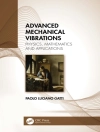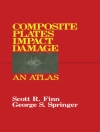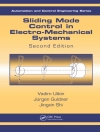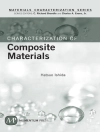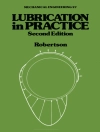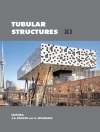This volume presents the proceedings of the Asia-Pacific Vibration Conference (APVC) 2019, emphasizing work devoted to Vibration Engineering for a Sustainable Future. The APVC is one of the larger conferences held biannually with the intention to foster scientific and technical research collaboration among Asia-Pacific countries. The APVC provides a forum for researchers, practitioners, and students from, but not limited to, areas around the Asia-Pacific countries in a collegial and stimulating environment to present, discuss and disseminate recent advances and new findings on all aspects of vibration and noise, their control and utilization. All aspects of vibration, acoustics, vibration and noise control, vibration utilization, fault diagnosis and monitoring are appropriate for the conference, with the focus this year on the vibration aspects in dynamics and noise & vibration. This 18th edition of the APVC was held in November 2019 in Sydney, Australia. The previous seventeen conferences have been held in Japan (‘85, ’93, ‘07), Korea (’87, ’97, ‘13), China (’89, ’01, ’11, ‘17), Australia (’91, ‘03), Malaysia (’95, ‘05), Singapore (‘99), New Zealand (‘09) and Vietnam (‘15).
Inhaltsverzeichnis
Nonlinear Vibration of an Electrostatically Excited Capacitive Microplate.- Elimination of the High Frequency Whistle Noise of a Residential Ducted Air-Conditioning through its Dedicated Pipe Muffler Design.- A Novel and Intelligent Multi-Mode Switching Control Strategy of Active Suspension Systems with Energy Regeneration.- Design of the Circular-Type Pod Silencer with Annular Two-Layered Air-Passages for a High-Pressure Axial Flow Fan.- Optimal Control of Acoustic Radiation Power for a Triple-Walled Structure.- Vehicle System Dynamics and Control Towards Overcoming the Challenges of the Prediction of Brake Squeal Propensity.- Handling Dynamics of an Ultra-lightweight Vehicle during Load Variation.- A Hybrid Electromechanical Engine Mount Design.- A Hybrid Modeling Approach to Accurately Predict Vehicle Occupant Vibration Discomfort.- TPA Synthesis of Pass-By Noise by IIR Filters.- Jacques Cuenca and Fabio Bianciardi Motion and Vibration Control of Automotive Drivetrain with Control Cycle Limitation.- Measuring Road Conditions with an IMU and GPS Monitoring System.- A novel Controllable Electromagnetic Vvariable Inertance Device for Vehicle Vibration Reduction.- Conceptual Design Model of Road Noise on Automotive Body in White Based on Energy Propagation.- Modeling and Measuring of Generated Axial Force for Automotive Drive Shaft Systems.- Optimization on Energy Management Strategy with Vibration Control for Hybrid Vehicles.- Modelling and Vibration Characteristics Analysis of a Parallel Hydraulic Hybrid Vehicle.- Model Validation of a Vehicle Fuel Tank for Modal Analysis.- Development of a Suspension Seat Using a Magneto-Spring and Free Play Damper.- Virtual Sensing Application Cases Exploiting Various Degrees Of Model Complexity.- Efficiency Analyze of a Dual-motor Electric Vehicle Powertrain.- Vibration and Control of Beams, Plates and Shells Numerical Analysis of Dynamic Hysteresis in Tape Springs as Flexible Appendages in Space Applications.- Adaptive Control of a String Pplate Coupled System.- Time-Delay Based Direct Wave Control of the Phononic Beam.- Free Vibration Analysis of Multilayer Skew Sandwich Spherical Shell Panels With Viscoelastic Material Cores and Isotropic Constraining Layers.- A Size-Dependent Variable-Kinematic Beam Model for Vibration Analysis of Functionally Graded Micro-Beams.- Vibration Analysis of a Viscoelastic Beam Equipped with a Resilient Impact Damper.- Vibration Analysis of a Beam with Both Ends Fixed Using Molecular Dynamics Method.- Numerical Investigation of Vibration Characteristics and Damping Properties of CNTs Based Viscoelastic Spherical Shell Structure.- Active and Passive Vibration Control Semi-active Vibration Suppression of a Structure by a Shear-type Damper Using Magnetorheological Grease.- A Comparison of Vibration Control Performance for the Electromagnetic Damper with Various Control Strategies.- Experiment and Numerical Investigations on a Vertical Isolation System with Quasi-Zero Stiffness Property.- Robust Vibration Control of an Overhead Crane by Elimination of the Natural Frequency Component.- Development of an Active Mass Damper Driven by an Amplitude Modulated Signal.- Recent Advances on Vibration Control of Engineering Structures Building Vibration Suppression through a Magnetorheological Variable Resonance Pendulum Tuned Mass Damper.- Dynamic Property Optimization of a Vibration Isolator with Quasi-Zero Stiffness.- Study on the Influence of Structural Nonlinearity on the Performance of Multi-Unit Impact Damper.- Design of a Quasi-Zero Stiffness System Based on Electromagnetic Vibration Isolation.- Active Noise Control for a Quieter Future Affine Combination of the Filtered-x LMS/F Algorithms for Active Control.- Experimental Study of the Virtual Sound Barrier Performance in Workplaces.- Active Control of Sound Transmission through an Aperture in a Thin Wall.- Real-Time Active Noise Control of Multi-Tonal Noise Based on Multiply Connected Single Adaptive Notch Filters.-A New Frequency Domain Adaptive Filter Coefficients Updating Method and Its Steady-state Performance in Frequency and Time Domain.- Effects of Reverberation on Active Noise Control Headrest Performance.- Zero Control Power Phenomena in the Minimization of Sound Power Using Multiple Control Sources.
Über den Autor
Dr. Sebastian Oberst, University of Technology Sydney, Centre for Audio, Acoustics and Vibration, Faculty of Engineering and IT; - Dr. Oberst works as Senior Lecturer at the newly founded Centre for Audio, Acoustics and Vibration (CAAV) and is Chief Investigator on several prestigious Australian Research Council grants. In 2017 he received the highly esteemed Junior Research Prize awarded by the European Association of Structural Dynamics (EASD) in the category ‚Development of Methodologies for Structural Dynamics‘. This prize follows the JSPS Award (2016) nominated by the Australian Academy of Science and an Australia Award/Endeavour Postdoctoral Research Fellowship (Australian Government, 2015) to work at the Imperial College London/Rolls-Royce Vibration University Technology Centre. Dr. Oberst led a DFG Priority Program (SPP1897) project in Applied and Theoretical Mechanics at the Technical University Munich; prior to this he worked as Research Associate then Space Engineer (Mechanical Antenna Design, Buccaneer Risk Mitigation Mission) at the UNSW Canberra from 2011 to 2016. Dr. Oberst received his Ph.D in Mechanical Engineering from The University of New South Wales in 2011 on his research on friction-induced instabilities and specialised since then in nonlinear dynamics of friction processes, as well as nonlinear time series analysis and signal processing, as applied to biotremology and micro-vibrational communication of insects.
Dr. Benjamin Halkon, University of Technology Sydney, Centre for Audio, Acoustics and Vibration, Faculty of Engineering and IT; – Dr. Benjamin Halkon is an experimentally-focuseddynamicist specialising in the development and industrially relevant application of non-contact measurements techniques and technologies primarily for the determination of structural vibration characteristics. Dr.Halkon joined UTS as a Senior Lecturer in the Faculty of Engineering & IT in 2017 and has been a core member of the Centre for Audio, Acoustics and Vibration therefrom. He has held the position of Deputy Head of School (Teaching & Learning) in the School of Mechanical and Mechatronic Engineering since early 2018 and has established, and is Academic Lead for, the LDV Lab at UTS Tech Lab – a unique facility within the region. Dr.Halkon has secured and completed many industry- and government-funded research projects and has supervised several post-doctoral and Ph.D (HDR) researchers and many UG/PG student projects in support of these. He has authored over 50 peer-reviewed articles and has contributed to policy change through his research and he is an Engineering Council accredited chartered mechanical engineer (CEng) and a Fellow of the Institution of Mechanical Engineers (FIMech E), a Fellow of the Institution of Engineers Australia (FIEAust) and chartered professional engineer (CPEng) and a Member of the Australian Acoustical Society (MAAS).
Dr.Jinchen Ji, University of Technology Sydney, School of Mechatronic and Mechanical Engineering, Faculty of Engineering and IT; -Dr.Jinchen Ji is a leading research scientist in the general areas of dynamics, vibration, and control, with over 110 journal publications. He has high-level expertise in dynamic modelling, vibration control, coordination control, synchronization and consensus control, noise control, condition monitoring, signal analysis, fault diagnosis, fatigue analysis, performance evaluation and energy consumption, and their applications to key problems in wind power industry, mining industry, manufacturing industry, agricultural industry and defense industry. He has been involved in a wide range of research projects which were financially supported by various government funding agencies and industry partners, in the fields of dynamic modelling, vibration analysis, vibration control, fatigue analysis, stability analysis, FEM analysis, and robotic systems.
Dr. Ji isan Associate Editor for two top international journals, namely, International Journal of Bifurcation and Chaos, and Journal of Vibration and Control. He is also an assessor and external reviewer for Australian Research Council ARC grant applications, Hong Kong RGC grant applications, and European Grant applications. He has been invited to be a session chair in many international conferences. He has also been invited to be a reviewer for over thirty international journals. Dr. Terry Brown, University of Technology Sydney, School of Mechatronic and Mechanical Engineering, Faculty of Engineering and IT;
– Dr. Terry Brown is a teaching focussed academic with a wide technical background and with interests and expertise in several areas. Dr. Brown joined UTS as an Associate Lecturer in 1995 and is now Senior Lecturer and Program Coordinator for Mechanical Engineering in the School of Mechanical and Mechatronic Engineering in the Faculty of Engineering and IT. He has taught in over 15 different subjects, made major contributions to establishing new courses and curriculum redevelopment and has received awards for his contribution to, and excellence in, teaching and learning. He has secured and completed, on his own and in partnership with others, several industry and government funded research and consultancy projects. These have been primarily in the areas of structural simulation and analysis and experimental verification and validation. Dr. Brown has also published widely, including in engineering education, biomechanics and vibration.


